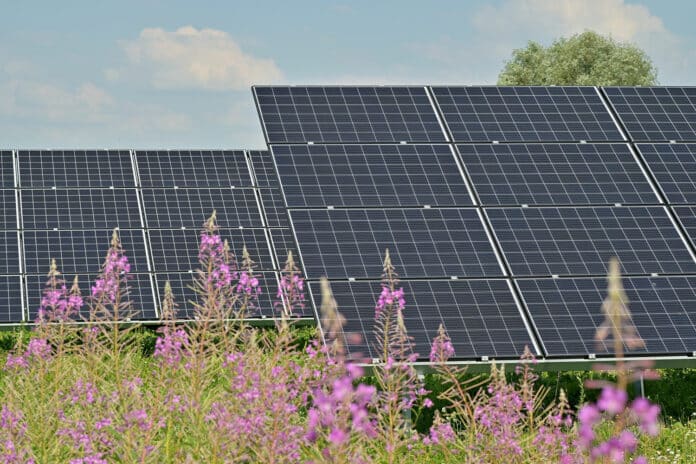Solar power is one of the fastest-growing clean energy sources and is good for the environment, but they have drawbacks. Producing solar cells requires advanced manufacturing and expensive raw materials, and also, there are limited ways to recycle them once they’ve reached the end of their lifespan.
Now, researchers at Australia’s Macquarie University have invented a microwave technology that could improve the manufacture of solar cells and make them easier to recycle.
During the fabrication of solar panels, silicon goes through several high-temperature processes called annealing, which alters its physical properties and performance. Currently, the cells are cooked in an oven.
Researchers found that heating using microwave radiation to heat the silicon was nearly as efficient and saved considerable time and energy. Because microwave radiation selectively heats silicon, it leads to almost instantaneous effects with massive savings of energy.
In microwave annealing, the ability to focus microwave radiation means the heating it induces can be selective and highly tuned. Some of the newer panels employ what is known as heterojunction technology, where crystalline and amorphous silicon are interleaved.
Precise focusing also means that annealing can be directed to specific parts of the solar panel, making it ideal for annealing solar panels with more intricate internal structures fabricated for special purposes. In contrast to an oven, where all sorts of chemical substances are shed from the walls, microwave annealing takes place in a clean environment.
“So there is less contamination,” said Dr. Binesh Puthen Veettil, lead author of the study. “And the whole process can all be undertaken at room temperature.”
Under microwave treatment, the plastic (ethylene vinyl acetate) coating that protects the silicon plate from moisture and contamination softens to the point where it can be peeled off mechanically. That means the plate can be easily delaminated and its components reused without employing harsh chemicals.
“Until now, it made economic sense to just dump the panels in the landfill,” says Dr. Veettil. “In the rare instances when they are recycled, you crush the panels, heat them to about 1400°C, and wash them with chemicals to remove the plastic – a highly energy-demanding process.”
The researchers plan to conduct further research to optimize the production process.
Journal reference:
- Binesh Puthen Veettil, Yuchao Zhang, David Payne, Mattias Juhl, Shujuan Huang, Brett Hallam, and Darren Bagnall. Microwave annealing of silicon solar cells. Applied Physics Letters, 2023; DOI: 10.1063/5.0127896
